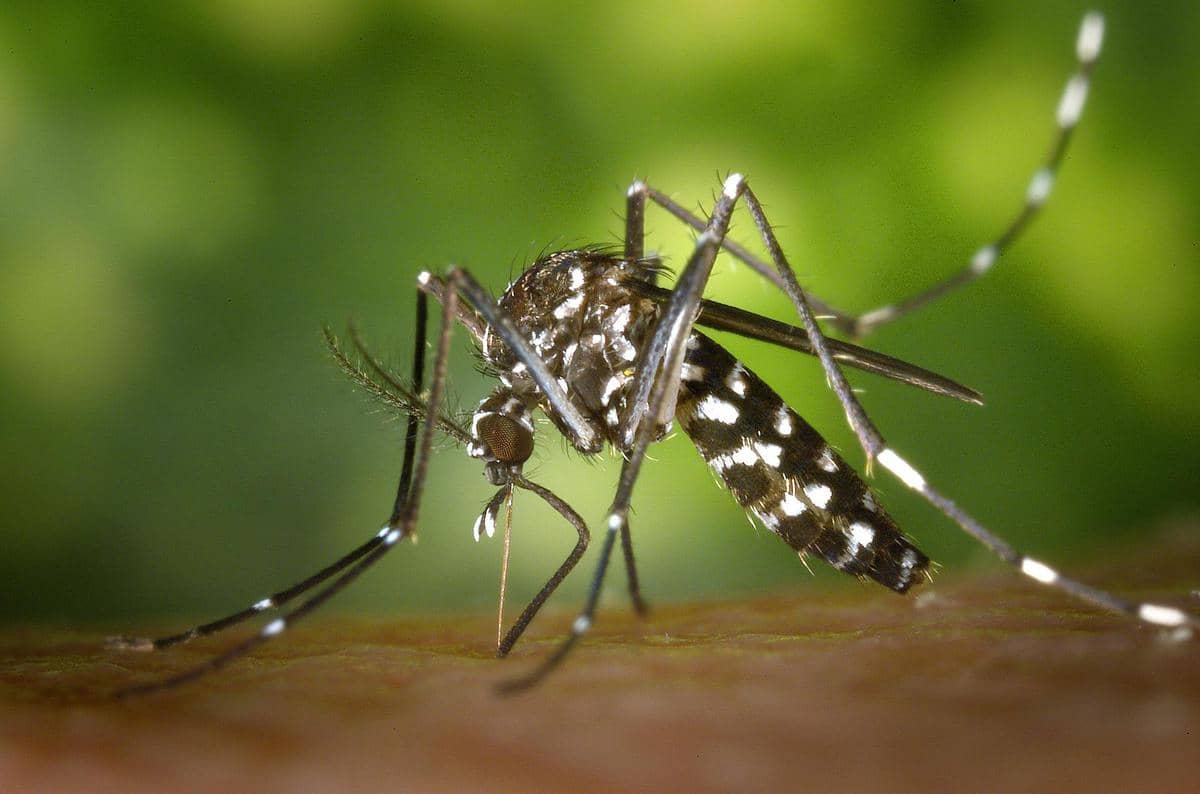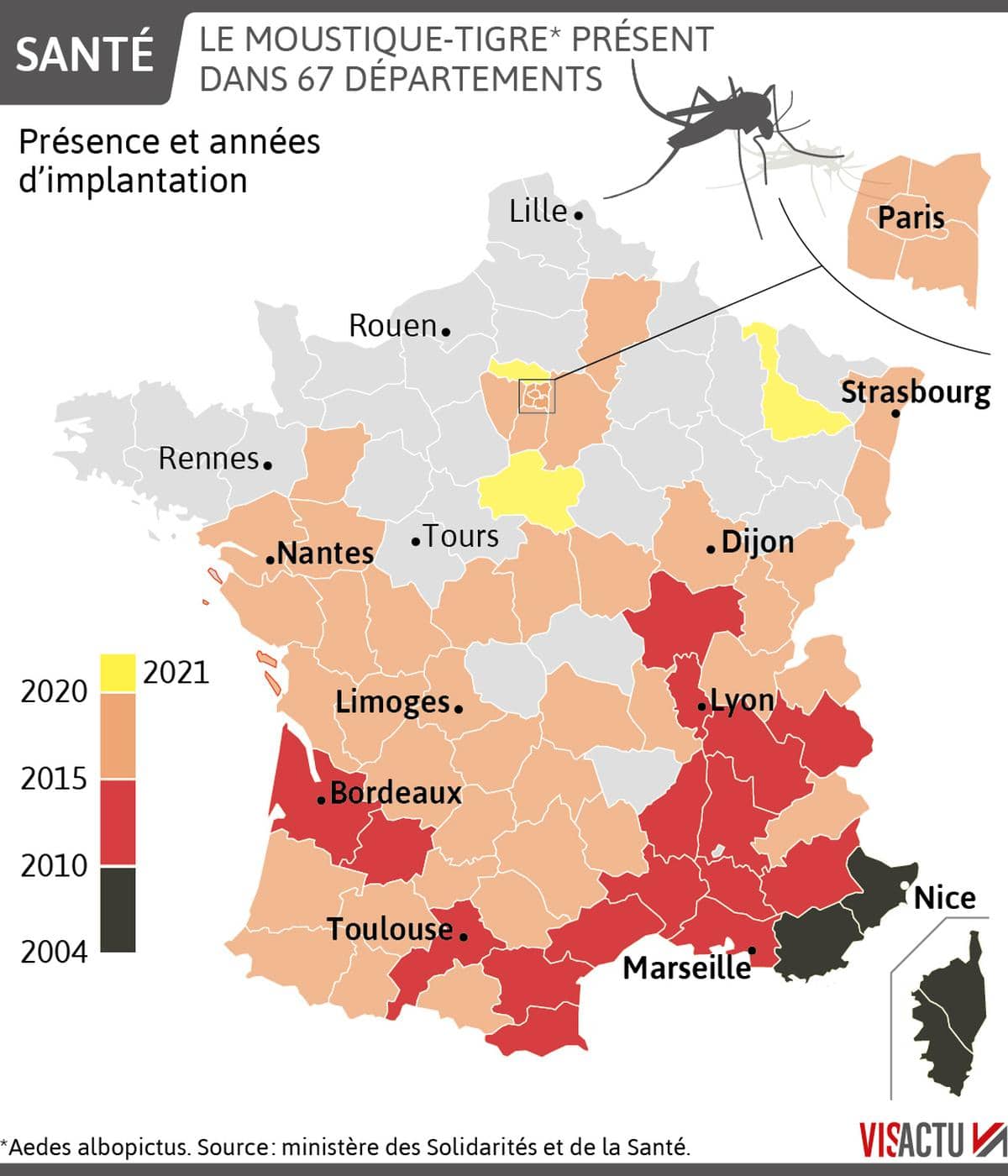In urban and peri-urban areas
The population is still dispersed. Cities and their surroundings are areas of expansion favored by the tiger mosquito, whose females like nothing like the small surfaces of stagnant water where they lay their eggs. In flowerpot cups, in outdoor play or in any corner provided it is wet.
The dynamic of progress owes a lot to her best assistant, the man. The insect leaped from one continent to another like a stealth plane in the incredible ballet to transport people and goods. It has particularly benefited from the export of used tires. Its rise to power dates back to the 1980s, which coincided with the explosion of trade,” Thierry Baldet recalls.

Pixabay

It continues to spread in France through the main roads. Stops in urban and suburban areas of Marseille, Lyon, Toulouse, Bordeaux and Paris. We will not remove it anymore. It is subordinate to humans there, but you should not think that it is not suitable for rural areas. In the region of its origin, it is found rather outside the cities. This is as true today in Brazil as in Reunion. It may compete with native species in European forests and countryside, but it is not excluded that it will spread there”, continues the researcher.
Forbidden in the land of ice
The fate of France is not alone. It is found in tropical and temperate regions of Asia, the Americas, Africa and Europe, in more than 150 countries or regions. In Europe it has been reported in more than twenty countries”, this was recalled at the presentation of the International Conference on Pests held in mid-May in Montpellier and brought together more than 120 researchers and public health actors.
“Its plasticity is remarkable. In Europe, it can go into hibernation (life in slow motion, editor’s note) in the winter. We find it at the Canadian border and it will reach Scandinavia. Its limit is zero”, defines Thierry Baldet. In short, like the brown rat many centuries ago, the spread of the tiger mosquito is a remarkable success story, perhaps reinforced by climatic disturbances.
Like the brown rat that occurred many centuries ago, the spread of the tiger mosquito is a great success story
When we know that the fertilized female lays three hundred eggs every three days, we can legitimately question the means to stop the tide. The search is going well. CIRAD and IRD (1) are working on biocontrol methods in Reunion. They pass through dispersal in the nature of males who have become sterile by irradiation. At CIRAD, we tested the method on a related species, Aedes aegypti, by adding a biocide to the released males. “We obtained an 88% reduction in mosquito numbers of this species in the treated areas. It is encouraging, but the research time is long,” the researcher sighs.
(1) CIRAD is a public organization for agricultural research and international cooperation for the sustainable development of the tropical and Mediterranean regions. IRD, the Research Institute for Development, is also a public research institution.

